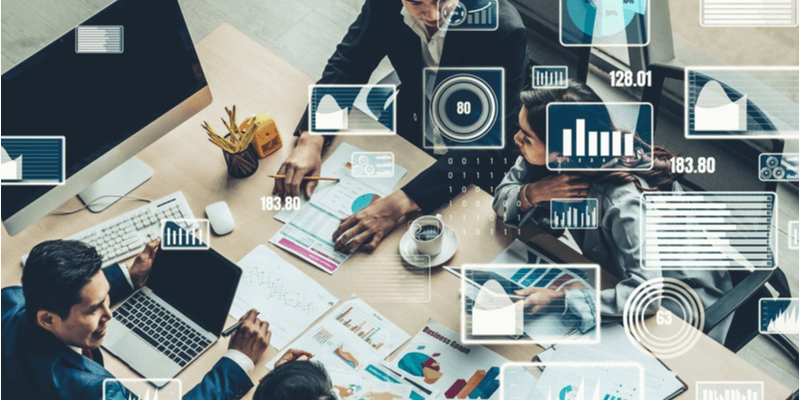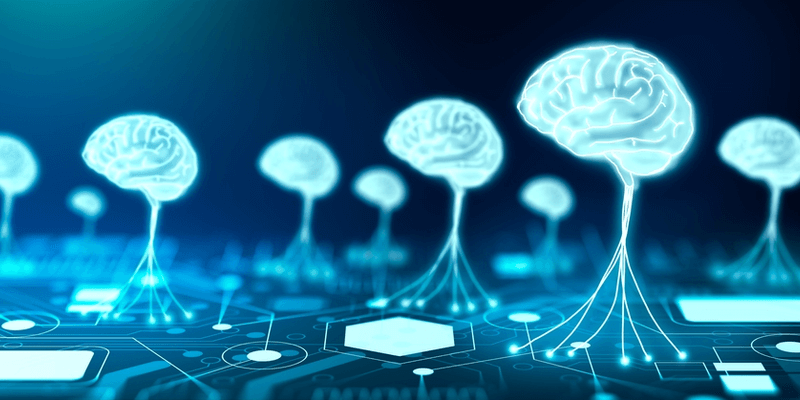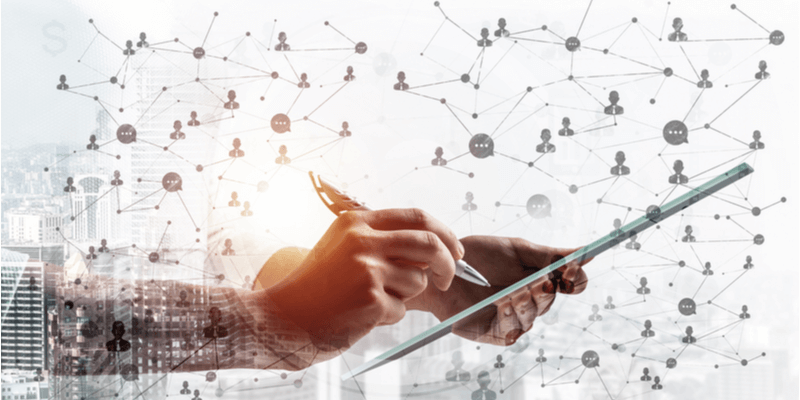
Datafication: What it is and why it will shape the future of business
The term “datafication” has remained popular despite being created relatively recently, in 2013. It seeks to use rigorous mathematical analysis to convert social activity into measurable data, as opposed to just digitizing existing analog information.
The goal of this essay is to clarify that datafication refers to the process of incorporating information gained via data collection and analysis into our daily lives in order to enhance them.
The major objective is to show how datafication contributes to digital strategies for businesses that wish to stay competitive in the market.
What is the importance of datafication in a business organisation?
Datafication allows companies to use real-time information to enhance their offerings. Not to mention, it is a crucial part of any business’s efforts to gauge consumer satisfaction with its products and services.
Consider the case of advertising approaches that are based on analysis of customer data. The process of gathering information on customers via digital mediums like social media, email, and other websites is crucial to the success of any digital marketing campaign. All of this data can go toward making more specific and effective marketing strategies for each individual customer.
Datafication: a new business model?
The goal is to embed an analytical mindset into every facet of doing business in the digital age. In datafication, data collection is the first step, followed by the use of AI and ML.
The data will next be analyzed by artificial intelligence and machine learning algorithms to extract actionable insights. Having a well-defined purpose and strategy is essential.
No amount of high-quality information can help if you don’t know what you’re trying to accomplish with your company. For the simple reason that information is only useful when applied to a relevant problem.
Data in the Cloud
The move toward cloud computing is a key aspect of digital transformations, especially at this stage of datafication.
Since the early 2010s, an increasing number of businesses have moved their infrastructure to the cloud. According to the International Data Corporation, the value of the cloud services industry will increase from $90.5 billion in 2016 to $408.5 billion in 2021. (IDC).
But what does this imply? In the first place, it means that consumers have access to cloud-based services, such as SaaS and PaaS. (PaaS). They can save money on servers because the service provider now supplies them. They only have to pay for the privilege of using the facilities.
In addition, there is Infrastructure-as-a-Service (IaaS), which allows you to rent the physical infrastructure but not the software. For the purpose of using your own software, you are provided with a virtual machine that has an OS installed on top of it.
Data Protection
If so many IT departments are managing their own servers, why do they do it? After all, they’re not cheap to acquire or keep up with. And why, if you don’t have any specific needs, would you pay for something you can use in the cloud just as easily?
Most businesses aren’t sure what they need from IaaS because of this very reason. They could be considering it as a means of cost reduction, but there are likely other factors at play.
For instance, some businesses might be hesitant to relinquish control of sensitive data or internal software. Having their own equipment may also make them more at ease (in this case, something more sophisticated). As a result of the sensitive nature of the data many businesses acquire, they must take this extra step, creating an opportunity to engage in private cloud computing.
With great power, comes great responsibility
Therefore, it is imperative that data protection be prioritized when datafication is applied to the context of digital transformation.
The term “data protection” is used to describe any measure taken by a company to safeguard its customers’ private information.
It includes:
- Legal requirements
These include laws such as the UK Data Protection Act 2018 (DPA) and the EU General Privacy Regulation (EU GDPR). They also cover how organisations collect, store, use and disclose customer data.
- Technical measuresTechnical measures refer to the actions taken to protect data in transit or at rest. Examples of technical measures include encryption, firewalls and access controls.
- Business practices
Business practices refer to how a business interacts with its customers and other stakeholders. These may include marketing campaigns, sales processes and customer service. And in a data protection scenario, for instance, it is illegal for businesses to process personal data without consent unless there is a legal basis for doing so.
This means that if you do not give your consent then your data cannot be processed. If you do give your consent, this must be given freely and knowingly.
Data is king in a digital economy
The information that now drives our civilization formerly existed only on paper or in digital form on floppy disks. Information about individuals, locations, businesses, and current events is readily available today. In light of this plethora, there are now more opportunities than ever to put money into the burgeoning big data and business analytics (BDA) sector.
BDA’s $168.8 billion in 2018 and projected growth to $274.3 billion by 2022 is not unexpected.
The aforementioned pie graphic demonstrates how data has spread outside the realm of IT to become an integral aspect of businesses of all sizes.
Do you want to learn more about current trends in the tech industry’s talent pool? To get our most recent whitepaper, just click the button.
Recruiting Top Green Tech Talent Essential for Net-Zero
In today’s economy, data literacy is a must.
The ability to make decisions based on data and to understand the data that is increasingly available to us is more crucial than ever. This is now possible thanks to developments in areas such as artificial intelligence, machine learning, big data analytics, and related fields.
“The world’s largest firms will produce $1 trillion in value from AI by 2025,” says McKinsey & Company.
This large sum demonstrates the pervasiveness of AI across all commercial domains. In this way, datafication is profoundly democratic, existing across disciplines like HR, finance, marketing, and banking, among others. To the extent that we have data, we can use AI to inform our judgment.

And speaking of opportunity, these emergent technologies can change the ways we do business by datafying new practices and services.
Blockchain
More than ten years have passed since the invention of blockchain technology. It’s time for businesses to take use of its potential to revolutionize the way they communicate with their customers.
To record exchanges between users, the blockchain functions as a distributed ledger that eliminates the need for a trusted third party. That frees everyone from dependence on others. Since everyone in the system has access to the same data at the same time, the system is safe to use.
AIOps
AI-as-a-service The application of AI techniques in the workplace is known as (AIOps). Most AIOps solutions are hosted in the cloud and made available via a web interface or mobile app. They also offer immediate insights into running processes and operations. So, AIOps can be utilized for things like predictive maintenance and process optimization.
Machine learning is the most popular type of AI. In order for an algorithm to learn, it must be trained with data that has been annotated by humans as positive or bad. The algorithm takes this knowledge into account when making forecasts concerning undiscovered information.
Training an algorithm to predict whether a user will make a future purchase is possible, for instance, by comparing their characteristics to those of customers who have and have not made that purchase in the past. Because it needs supervision from a human trainer, this form of AI is known as supervised learning.
Human supervision is unnecessary for unsupervised learning. When there is no simple way to tell good instances from bad ones, it excels.
FinOps
Management of a business’s monetary operations is known as Financial Operations Management (FinOps). Everything from financial planning and analysis to the oversight of potential threats is a part of FinOps.
No longer is financial reporting the only focus. FinOps goes much beyond just financial reporting. Furthermore, datafication is crucial because it paves the way for the aggregation and evaluation of information that was previously isolated in distinct databases.
The word “fintech” has been coined to describe the current technological trend in the financial sector. It melds the worlds of business and cutting-edge computing. Companies like Google Finance and Intuit’s QuickBooks Online are just two examples of those that have used FinOps and found it to be successful.

Cognitive Computing
When discussing AI, ML, and HCI, the term “cognitive computing” is often used as a catchall. In this case, data mining is employed to glean insights from massive datasets. The purpose of attempting to program a computer to mimic human thought is so that it can accomplish tasks that humans currently cannot.
The increasing prevalence of solutions like NLP and pattern recognition algorithms for analyzing text, images, and even speech is a prime example.
Edge Computing
With edge computing, cloud-based services and technology are used at the network’s periphery, such as on mobile devices or in wireless sensors. The promise for edge computing to speed up data processing while reducing power usage has attracted a lot of attention.
One of the key benefits of edge computing is that it may be used to process data locally, eliminating the need to upload and download large amounts of data to and from the cloud. With less bandwidth being used, the user experience is enhanced and latency is decreased.
Microweather
In meteorology, the term microclimate (or microclimate) is used to refer to the local meteorological conditions on a small scale, such as within a single building or on a street. When comparing a microclimate to its macroclimate, you may notice a significant difference in the average temperature or humidity.
Farmers, consumers, and businesses can all benefit from the data collecting and subsequent projections. The system utilizes sensors to evaluate air quality, wind speed and direction, rainfall intensity and duration, soil moisture content, and other parameters, in order to provide accurate climate forecasts.
Warehouse Management Tech
Some of the hottest topics in this emerging field that helps with warehouse management are autonomous robots and analysis prediction.
Use of sensors to detect objects or other entities inside its environment is key to the concept of employing a robot to do activities automatically. The robot takes these cues into consideration while deciding what to do next. This procedure is carried out again and over again till the job is finished.
A picker robot is a typical example of this type of robot, as it is used to retrieve things off shelves and pack them into shipping containers. By recording the robot’s actions, we can foresee where it will travel next. To avoid wasting time wandering aimlessly about the warehouse, this information can be used to plot out efficient paths.

Online Reputation Management
ORM (or online reputation management) has evolved into a crucial strategy for human resource specialists. ORM encompasses more than merely keeping an eye on people’s feedback on the web. Taking care of your company’s image in cyberspace is what this is all about.
The purpose of online reputation management is to shield your business’s good name from attacks made on social media and review sites like Google, Yelp, TripAdvisor, and Facebook.
With the advent of the digital age, the HR sector entered a new phase. Datafication is being applied to many various HR practices, including the hiring process.